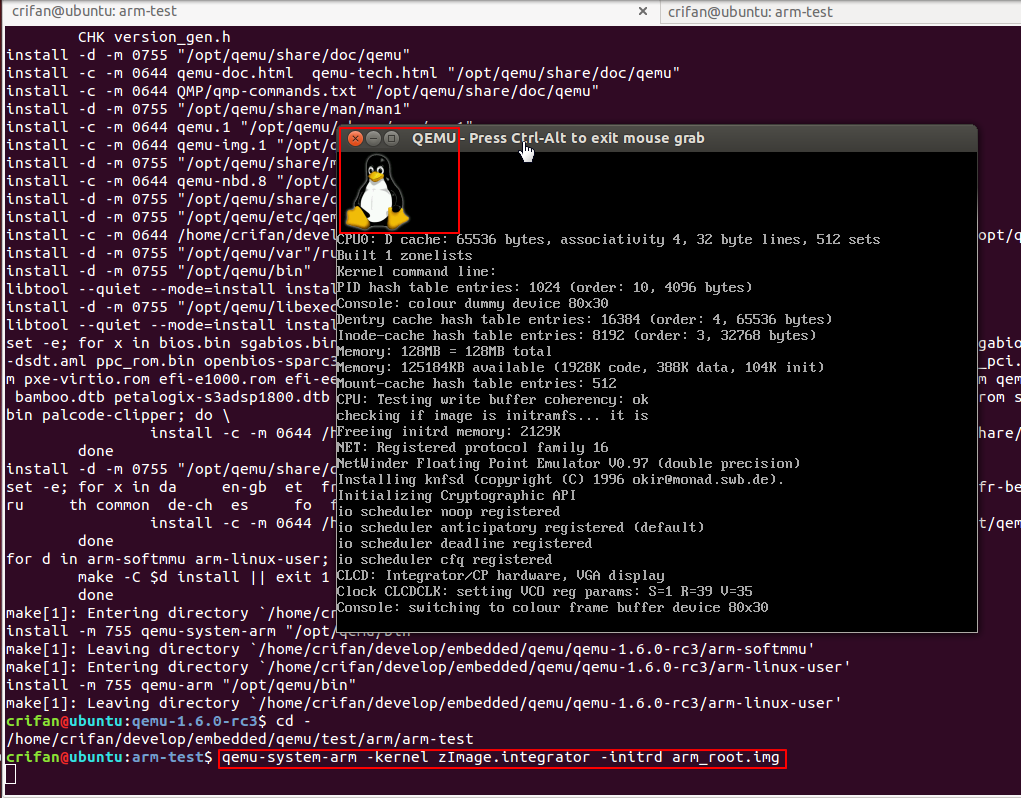

- #Qemu system arm help serial
- #Qemu system arm help update
- #Qemu system arm help driver
- #Qemu system arm help archive
Where DEVICE is the serial device connected to with QEMU's -serial option. Where SYM_FILE is the file created by the keeplinked directive, in the image directory ( $BFS_DIR/images). If you are using a serial terminal, such as minicom, it _must_ be disconnected before the debugger is attached. Run QEMU with a serial emulator (such as PTY). PATH=:/proc/boot:/sbin:/bin:/usr/sbin:/usr/bin LD_LIBRARY_PATH=:/proc/boot:/lib:/usr/lib:/lib/dll procnto-instr -v Add a keeplinked directive to the procnto line:.Add the debugger to the bootstrap section, following the startup command (the -K for an initial breakpoint is optional):.To use the kernel debugger, apply the following changes to the beagle.build file: This boot command can be written into the NAND drive and executed automatically on subsequent boots: You need to manually stop the boot process (press any key), and use the following command to boot QNX: To emulate a serial connection to the board, append -serial pty to the command line (other serial emulators are available, such as a TCP socket).īy default, the image displays the U-boot menu. Where DRIVE_FILE is the file created by mknand.sh. $ qemu-system-arm -M beagle -m 256 -mtdblock DRIVE_FILE -nographic Simply set the top-level directories as required, and type "make" to create the drive.
#Qemu system arm help archive
Where DRIVE_FILE is the file created by mknand.sh.Ī Makefile included in the archive automates the steps above. The checksum calculator should be executed as follows: Where DRIVE_FILE is a name for the NAND image and IFS_PATH is the full path to the QNX Beagle IFS file. The mknand.sh script is invoked with the following command line:
#Qemu system arm help update
Subsequently, any change to the IFS requires mknand.sh to be invoked again in order to update the drive, followed by ecc_nand to compute the new checksum. The script should also be given the path to the IFS image, which, if loaded from the BSP, is $BSP_DIR/images/ifs-omap350-beagle.bin. When mknand.sh is first executed, it will create the NAND drive file and load X-loader and U-boot into their appropriate locations.


The calculator's source code is included in the archive as nand_ecc.c. Whenever the drive file is modified, a checksum calculator should be executed to fix the checksum values. The attached archive contains a script, mknand.sh, that creates the drive file and loads the different components (X-loader, U-boot, IFS) onto it. It is thus insufficient to create a zeroed 256 MB file to use as an emulated file. This drive is composed of 2K pages, each followed by a 64 byte checksum value. The board will be booting and running off an emulated 256 MB NAND drive. #display_msg Starting USB EHCI Host and OTG host driver. #display_msg Configure power management chip To disable the PMIC driver, comment the relevant lines in $BSP_DIR/src/hardware/startup/boards/omap3530/beagle.build:
#Qemu system arm help driver
There is currently a problem with the IFS's PMIC driver on the emulated Beagle board. To build the IFS, simply type make at the top level directory of the unzipped BSP archive. X-loader and U-boot for the Beagle board ( QEMUAsAnOMAP3530BeagleboardTarget/).Note that the Ubuntu 11.04 QEMU package is already patched and includes support for the Beagle board. QEMU with the Linaro patches ( ): The Beagle board emulation has not yet been merged into the official QEMU distribution.


 0 kommentar(er)
0 kommentar(er)
